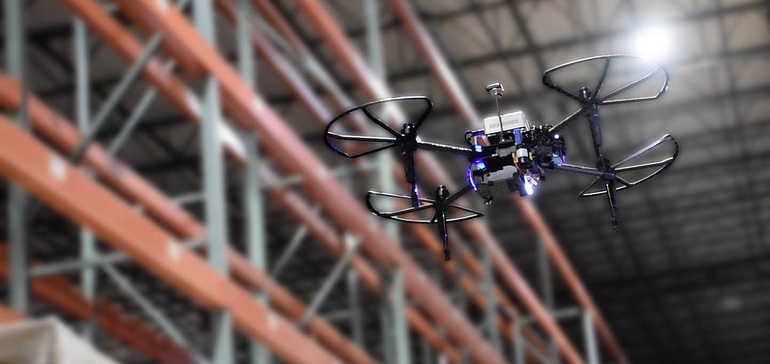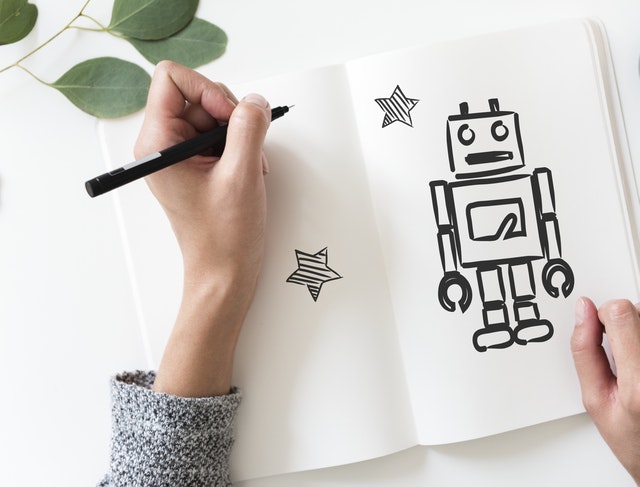
Automation is a hot topic in just about every field these days. There is ongoing debate about whether robots will take our jobs, how much automation we need, and how to implement AI in business. Clearly this discussion will grow as the available robotics and AI applications increase. Meanwhile, there are already drones, robots, and AI's among us.
Here is a quick rundown on some of the top non-human helpers already integrating with our warehouses and fulfillment centers in 2018.
Inventory drones
Experts say that 90% of a company's inventory is stationary in the warehouse and many companies carry excess inventory because they don't know what they have or where it's located. Back in 2016, Walmart began testing aerial “inventory drones” designed to fly around the warehouse and quickly take inventory using sensors. In 2017, Massachusetts Institute of Technology tested drones reading RFID tagged inventory to prevent mismatches and find individual items.
@SupplyChainDive points out that “automated warehouse inventory systems like drones suffer from the 'garbage in, garbage out' problem. If inventory is misplaced, an automated system will only be able to point out the problem, not prevent it or fix it.” Enter humans. This is a perfect example of how human supervision is needed for the success of an automated system.
It's also an example of how human jobs must change, not necessarily disappear, in order to support the evolving world of automation. With these drones, it won't be necessary for a human to hand count inventory. Rather, when a discrepancy is discovered, the human workers can step in to search and adjust the results.
Warehouse Platforms
Carnegie Mellon and Honeywell have partnered to develop new supply chain robotics and AI solutions for ecommerce distribution. The collaboration will focus on developing a next-generation architecture to control and operate multiple robotic applications. The platform uses machine learning to enable decision-making, intelligent motion, and collision avoidance. The goal is to safely integrate robotics into warehouse environments.
Robots in Retail
Northwestern University recently announced its new Retail AI Lab and Retail Robotics Initiative. The main goals of the new program is to increase research and awareness for careers in retail AI and analytics. The initiative will help connect robotics companies with retailers to help provide training for a new generation of warehouse and retail workers. In the new market, workers must be able to understand and oversee robotics, but there is a widening gap between the labor force and automation, leaving many workers to feel as if robots will take their jobs. These new programs will strive to close this gap.
Automated Warehouses 
Best Buy has been showing former competitors how it's done over the past five years as it rebuilt revenues and avoided obselescence. With new ideas about how to drive sales in today's omnichannel retail environment, the company is transforming its supply chain and building a new distribution center with an automated system to increase speed and efficiency.
AI for ERP
Humans have been working on artificial intelligence for over sixty years, developing a foundation of technologies to apply to real world problems. Now we have sensors to track every move a product makes, decision-making systems to facilitate and analyze information, and cloud solutions to collect and archive a myriad of data points. These AI building blocks are now being combined to transform ERP, increasing efficiency and accuracy.
Last Mile Drones
Over half of global parcel delivery costs are primarily incurred in the last mile. With the explosion of eCommerce, this has become the most obvious aspect to improve with automation. Amazon first suggested drones for delivery over five years ago, with other companies close behind. Others suggest autonomous vehicles.
While drones are unable to carry larger items, they can move quickly and are not affected by traffic. On the other hand, trucks can carry more, but must move with traffic and are subject to fuel costs.
This year, Justin Yoon, a thesis student at the MIT Center for Transportation & Logistics (MIT CTL) Supply Chain Management (SCM) program, led a study to assess the impact of a combination of autonomous vehicles and delivery drones.
The study found that “the use of drones as a supplement to delivery trucks show significant savings, with a base case median savings of 30% over using truck only.” This suggests that the optimal solution to reduce labor costs and improve delivery efficiency will use drones that travel on vehicles, dettaching to deliver items while the truck continues moving towards the next delivery.
Conclusion
No single robot will transform the warehouse and fulfillment industry on its own. Instead, these new advances will be integrated into systems that also use sensors, RFID tags, AI, cloud systems, and drones to create a more productive and robust system to address the increased volume and decreased staffing of today's eCommerce world.
In this world, humans will work alongside robots and machines in new ways. The transformation is just beginning. Enjoy the ride!
Business Tips and Industry News
For more news and tips on all things business and e-commerce, visit our e-zine. Our e-zine is also available as an rss feed.



